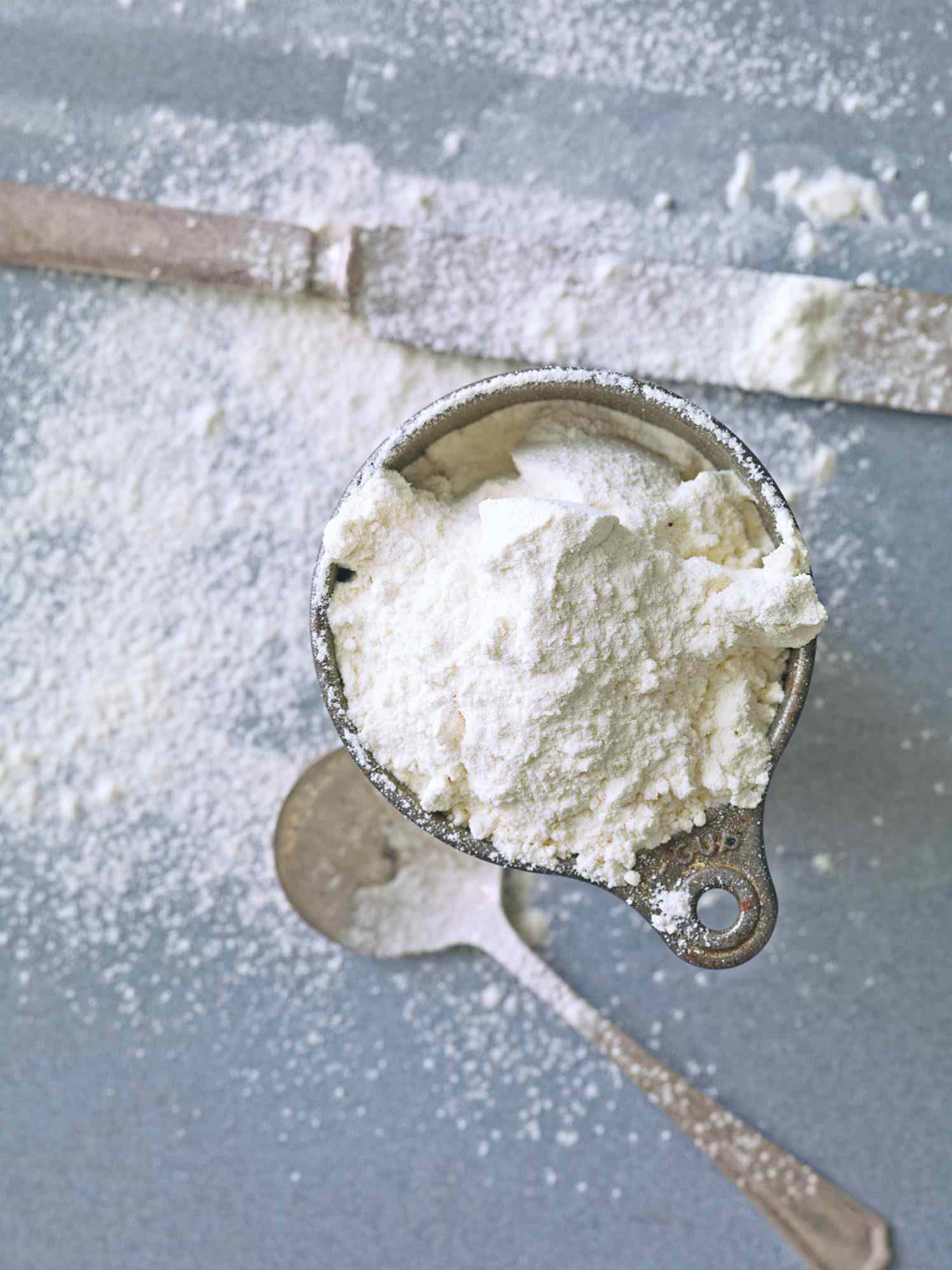
With a full pantry, spending money on pastry flour can seem silly, especially if you’re not going to use it often. Doesn’t all-purpose flour work well enough? Well, trust us: Pastry flour is worth knowing about (and using) if you like to bake. Keep reading for everything you need to know. Plus, we’ll also dish on cake flour.
The Difference Between Pastry Flour and All-Purpose Flour
Pastry flour is a low-protein, specialty flour ideal for baked goods. On average, pastry flour has an 8 to 9 percent protein count versus all-purpose flour, which contains approximately a 10 to 12 percent protein count. For pastries like biscuits, scones, pie crusts, and quick breads, a lower protein count means a lighter, flakier dough.
Protein count is equated with the amount of gluten in flour; the higher the protein count, the more gluten in your flour, which will result in a denser dough. As you mix dough, the gluten in the flour (aka the protein) binds together and becomes tighter. This is why it’s especially important to not overwork your dough—too much mixing will lead to a tough, chewy dough.
However, pastry flour is not ideal for all pastries: cinnamon buns, for example, generally have a soft but dense dough, which is best achieved by using all-purpose flour. So, it’s important to consider each recipe carefully. While pastry flour can transform challenging doughs like homemade puff pastry, it is not a one-size-fits-all ingredient.
Whole Wheat Pastry Flour
Whole wheat pastry flour is made from the complete wheat kernel, thus it is less processed and more nutritious than enriched and bleached pastry flour. Whole wheat pastry flour adds a nutty, slightly dense texture to pastries. Much like pastry flour, the whole wheat version has a lower protein count than all-purpose flour, which helps achieve lighter pastries. Whole wheat pastry flour’s nutritional value comes from its high fiber content and lack of traditional additives like niacin, iron, thiamine, folic acid, and riboflavin. You can use whole wheat pastry flour interchangeably with pastry flour— it’s simply a matter of personal taste.
The Difference Between Cake and Pastry Flour
While pastry flour is ideal for pie crusts and tart shells, cake flour is designed for (you guessed it!) cake. Cake flour’s soft, fine texture easily absorbs liquid and sugar, which produces extra-moist cake. Cake flour has a 7 to 8 percent protein count, even lower than pastry flour. The low protein count creates the moist, fine crumb and fluffy texture in cakes and muffins. Many cake flours, like Pillsbury Softasilk ($14 for a two pack, amazon.com) and Swans Down ($13 for a two pack, amazon.com), come pre-sifted, enriched, and bleached. We recommend trying it out in our pound cake.
Note: Cake flour should not be substituted in recipes that call for all-purpose flour. Because cake flour contains less protein than all-purpose flour, it requires more fat (e.g., eggs, oil, and butter) to support its weight and leaven properly. Try experimenting at home until you find the perfect fat to flour ratio for your sweet treats!
Pastry Flour Substitutes
An easy DIY pastry flour can be made in your own kitchen—for 1 cup of pastry flour, combine ½ cup of all-purpose flour and ½ cup of cake flour. The protein from equal proportions of all-purpose flour and cake flour meet in the middle to create perfect pastry flour.
For gluten-free bakers, Jovial Foods has created a pastry flour made from organic ancient grains and organic brown rice flour ($5.50, jovialfoods.com). Blends by Orly also sells a certified-GF pastry flour which uses similar ingredients like brown rice flour, whole grain sorghum flour, millet flour, and long grain rice flour ($14, amazon.com).
Shopping For Flour?
Pastry flour can be found in nearly every grocery store, either in the baking aisle or in a designated natural/organic aisle, as well as online. King Arthur’s Flour ($3, amazon.com), Bob’s Red Mill, and Arrowhead Mills have all created their own pastry flours.
